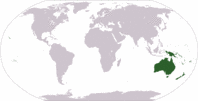Physokentia petiolata
| Physokentia (fy-soh-kehn-TEE-ah) petiolata (peh-tee-oh-LAH-tah) | |||||||
|---|---|---|---|---|---|---|---|
 Photo-Rare Palm Seeds.com | |||||||
| Scientific Classification | |||||||
| |||||||
| Synonyms | |||||||
|
| |||||||
| Native Continent | |||||||
|
| |||||||
| Morphology | |||||||
| |||||||
| Culture | |||||||
|
| |||||||
| Survivability index | |||||||
|
| |||||||
| Common names | |||||||
|
| |||||||
Contents
Habitat and Distribution
Endemic to Fiji, and known only from the island of Viti Levu.Description
Trunk erect, to 8 m tall, 10 cm in diam., green, with irregular leaf scars, with a cone of prickly stilt roots to 1 m long, about 4 cm in diam., reddish. Leaves pinnate, 8-10 in crown, stiffly spreading to ascending; sheaths forming a prominent crownshaft to 50 cm long, thickened at base, olive-green, sometimes pink flushed to red toward base; petiole to 22 cm long; pinnae 25-35 per side, dull green, once ribbed, acute with decurved margins, to 70 X 4 cm. Inflorescence infrafoliar, to 50 cm long, branched to three orders, red in bud becoming green in fruit. Flowers in spirally arranged triads, with triads along proximal half, sometimes to distal portions; staminate flowers to 5 mm long; petals 3, deep rose-red; stamens 6 with white anthers; pistillode trifid; pistillate flowers to 5 mm long; petals dark rose-red; sepals strongly imbricate. Fruit globose, to 2 cm in diam., dark red at maturity; endocarp angled, keeled and longitudinally ridged. Seed same shape as fruit, 1.2 cm long, 1 cm in diam. Eophyll pinnate. (D. Fuller. 1999)/Palmweb. Editing by edric.
Culture
Cold Hardiness Zone: 10b
Comments and Curiosities
Etymology: Named for the prominent leaf petiole.
Conservation: This palm species is common in areas that are protected for watershed management purposes (Monasavu Hydroelectric Dam Project). However, on the basis of collection data and disturbance of some P. petiolatus habitat in other areas (e.g., Navai) by logging activities, this taxon should be considered rare. Dick Phillips (pers. comm.) has had limited success cultivating this species in Fiji, and so far I have no reports of successful cultivation of P. petiolatus outside of Fiji. (D. Fuller. 1999)/Palmweb.
This beautiful, rare palm, once known as Physokentia rosea, forms a slender trunk to about 8 m (27 ft.) tall, supported by a cone of thick stilt roots. The dark olive green to gray crownshaft holds a spreading crown of up to 10 slightly arching and lightly keeled, pinnate leaves with wide leaflets. The fruits are the size of small cherries and ripen from green over red to black. The seeds are heavily sculpted like those of Burretiokentia. Young plants usually have a dark reddish brown crownshaft and leaf stalks. It is native to wet montane forest on the Fijian islands of Viti Levu and Gau, mainly between 750 and 1250 m (2500 and 4100 ft.) but also as low as 300 m (1000 ft.). While apparently not in cultivation elsewhere, a few attempts at growing Physokentia petiolata have been made in Fiji. It does not seem to prefer lowland tropical conditions particularly, but would likely thrive at some altitude or perhaps in a warm temperate climate that does not experience excessive heat, cold or drought. Seeds are said to be slow to germinate, but that should not scare off the real enthusiast. (RPS.com)
- IMAGE GALLERY
External Links
References
Phonetic spelling of Latin names by edric.
Special thanks to Geoff Stein, (Palmbob) for his hundreds of photos.
Special thanks to Palmweb.org, Dr. John Dransfield, Dr. Bill Baker & team, for their volumes of information and photos.
Glossary of Palm Terms; Based on the glossary in Dransfield, J., N.W. Uhl, C.B. Asmussen-Lange, W.J. Baker, M.M. Harley & C.E. Lewis. 2008. Genera Palmarum - Evolution and Classification of the Palms. Royal Botanic Gardens, Kew. All images copyright of the artists and photographers (see images for credits).
D. Fuller, The lost palm of Fiji – a resolution of Goniocladus and a preliminary cladistic analysis of Physokentia. 1999. The lost palm of Fiji – a resolution of Goniocladus and a preliminary cladistic analysis of Physokentia. Pages 203-213 in Andrew Henderson and Finn Borchsenius (eds.). Evolution, variation and classification of palms. Memoirs of The New York Botanical Garden. Vol 83.
Many Special Thanks to Ed Vaile for his long hours of tireless editing and numerous contributions.















